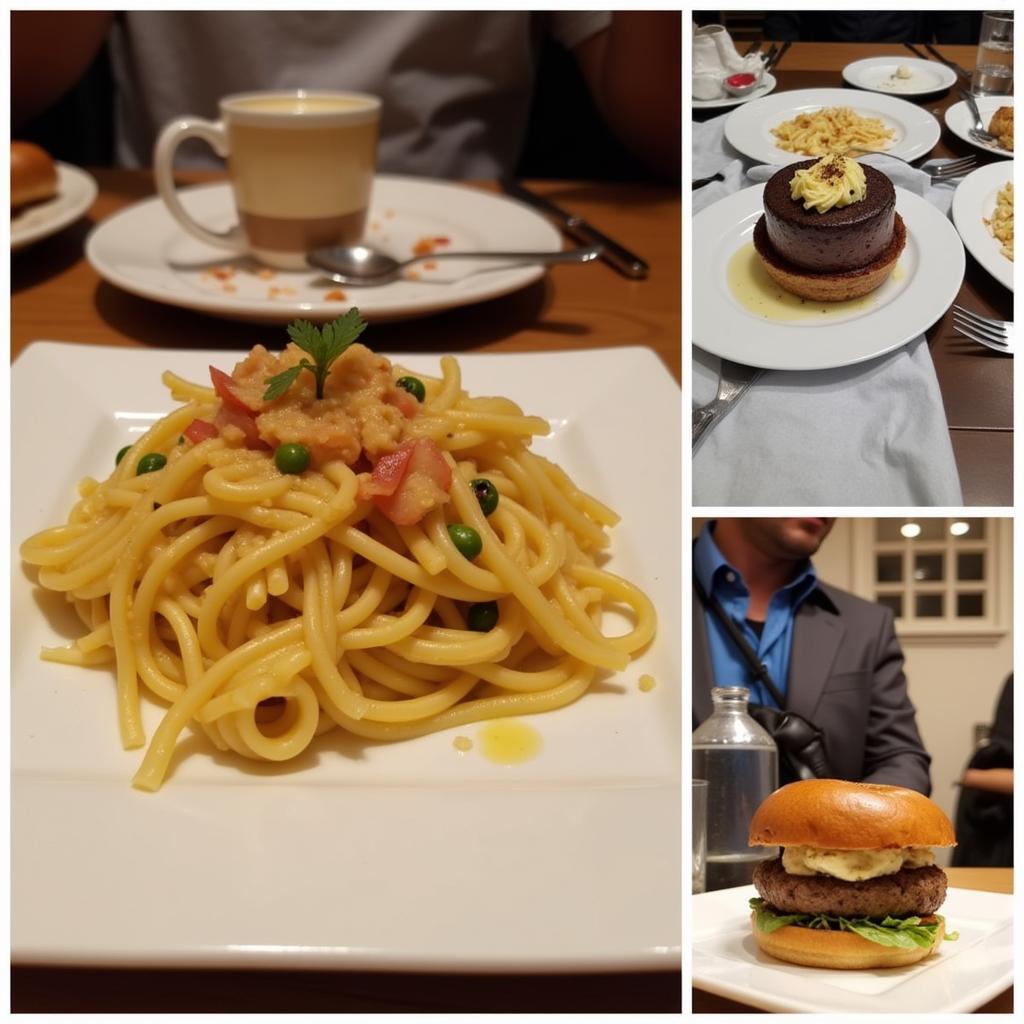Bad Food Photography can turn a culinary masterpiece into an unappetizing mess. In today’s visually-driven world, capturing the essence of your delicious creations is crucial, especially for food bloggers, restaurants, and anyone sharing their culinary adventures online. Let’s explore how to transform your bad food photography into stunning visuals that will leave your audience craving more.
Understanding the Pitfalls of Bad Food Photography
What constitutes bad food photography? It’s more than just blurry images. It’s about photos that fail to capture the vibrant colors, textures, and overall appeal of the food. Common culprits include poor lighting, cluttered backgrounds, unappetizing styling, and over-editing. These issues can make even the most delicious dish look uninviting.
One common mistake is relying solely on overhead lighting, which can cast harsh shadows and wash out colors. Another pitfall is neglecting the background. A messy or distracting background can draw attention away from the star of the show: the food.
Over-editing is another frequent offender. While some editing can enhance a photo, going overboard with filters and saturation can make food look artificial and unappetizing. Understanding these common photography mistakes is the first step towards improvement.
 Examples of Bad Food Photography
Examples of Bad Food Photography
Transforming Your Food Photos: Simple Yet Effective Techniques
Transforming your bad food photography doesn’t require professional equipment. A few simple adjustments can make a world of difference. Start with natural light. Positioning your dish near a window can dramatically improve the quality of your photos. Use a reflector, even a simple white piece of cardboard, to bounce light back onto the food and fill in shadows.
Pay attention to composition. The “rule of thirds” is a great guideline for creating visually appealing images. Imagine your frame divided into nine equal parts by two horizontal and two vertical lines. Placing your subject at the intersection of these lines creates a more balanced and engaging composition.
Don’t overcrowd the frame. Keep the focus on the food by using simple props and backgrounds. A plain white plate on a neutral background can often be the most effective way to showcase your culinary creations.
Mastering Food Styling and Composition
Food styling is crucial for making your dishes look their best. Think about the colors, textures, and shapes of your ingredients. Arrange them in a way that is both visually appealing and appetizing. A sprinkle of fresh herbs or a drizzle of sauce can add a touch of elegance and enhance the visual appeal.
Consider the angle. Experiment with different perspectives to find the most flattering angle for your dish. Sometimes a straight-on shot works best, while other times a slightly overhead or angled view can be more dynamic.
Editing: Enhancing, Not Overpowering
Editing can enhance your food photos, but it’s important to use it sparingly. Adjust the brightness, contrast, and sharpness to optimize the image, but avoid over-saturating colors or applying heavy filters. The goal is to make the food look natural and delicious.
What Makes a Food Photo Bad? Common Mistakes to Avoid
Several factors contribute to bad food photography. Understanding these common mistakes is key to improving your skills. Poor lighting can make food look dull and unappetizing. Cluttered backgrounds can distract from the food. Unflattering angles can make a dish look less appealing. And over-editing can make food look artificial.
Why is Food Photography so Hard?
Food photography can be challenging because it requires a combination of technical skills and artistic vision. You need to understand how to control lighting, composition, and styling, while also capturing the essence and appeal of the food.
“Food photography is about telling a story,” says renowned food photographer, Amelia Grant. “It’s not just about capturing the food, but also the emotions and experiences associated with it.” Capturing that story requires practice and patience.
Conclusion
Conquering bad food photography is achievable with practice and attention to detail. By understanding the common pitfalls and implementing these simple techniques, you can transform your food photos from unappetizing to mouthwatering. Remember, capturing stunning food visuals is about showcasing the beauty and deliciousness of your culinary creations. Now, go forth and create some visual feasts!
FAQ
-
What is the best lighting for food photography?
Natural light is generally the best for food photography. -
What kind of background should I use?
Simple, neutral backgrounds are often the most effective. -
What are some common food styling tips?
Use fresh ingredients, arrange them thoughtfully, and add a touch of garnish. -
What editing software should I use?
There are many great editing apps available, both free and paid. -
How can I improve my food photography composition?
Use the rule of thirds and experiment with different angles. -
What’s the biggest mistake in food photography?
Not understanding lighting and over-editing. -
How do I make my food look appetizing in photos?
Focus on freshness, styling, and composition.
We also have a guide on custom labels for food packaging which can enhance your food presentation further, especially for businesses.
Need more help with captivating visuals? Check out our other articles on branding and marketing.
Need support with your food packaging? Contact us at Phone Number: 02437655121, Email: [email protected] Or visit us at: 3PGH+8R9, ĐT70A, thôn Trung, Bắc Từ Liêm, Hà Nội, Việt Nam. We have a 24/7 customer service team.